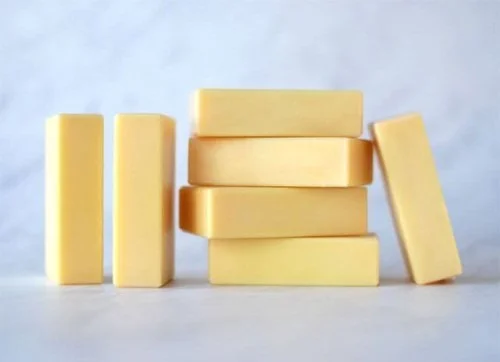Cold Process Soap Making
One of the most common methods for making soap at home is the cold process method. The first thing that a novice should do is understand what soap is. It is vital to being successful in the soap-making endeavor. The next thing to do is to choose a recipe.
It can be your own or from the soap recipe library available on the net. Before proceeding, review the safety guidelines for making soap to avoid problems during the process. When you’re finished, start gathering the necessary equipment, tools, and ingredients and get ready to begin.
Are you wearing your safety gloves and goggles already? Wear this throughout the process.
The following are the basic steps in cold processing:
1. Prepare the lye solution. Weigh the dry lye accurately according to the recipe, together with the amount of water. Never use hard water, for this may cause a water reaction in the cold process. When measuring dry lye, keep it in a sealed container in case of an interruption and keep it safe. Always be accurate in measuring ingredients. Remember to pour the lye into the water and not the water into the lye. Mix it until it completely dissolves the lye and water. Place a thermometer in the lye solution and set it aside. Place the solution in a safe place away from pets or children.
2. In a medium-sized pot, melt the solid oils. Gently stir the oils and gently melt them. Always keep an eye on the temperature. When the temperature reaches 110 degrees, turn off the heat. Continue stirring until it completely dissolves the oils. Once the solid oils are melted, add the liquid oil to the soap pot, which will bring the overall temperature down. When adding the lye-water mixture, the oils must be at 100°F.
3. Prepare all the fragrance oils, additives, colors, spoons, spatulas, and whisks before continuing the cold process of making soap. Now slowly add the lye and water mixture to the soap pot, and you will notice a cloudy reaction of the oils. Manually mix the lye water into the oil using the blender stick with the blade turned off, then set aside in a safe place.
4. While mixing the lye-water-oil mixture, turn on the blender shortly once in a while until the mixture is entirely mixed. When this happens, you are almost reaching a trace.
5. Gradually add the fragrance or essential oils to the mixture before it becomes too thick. Use the stick to blend all the ingredients.
6. If you have any additives, now is the time to add them to the mixture and gently stir them in. Before pouring in the colorants, use the stick blender to ensure that the additives are well blended.
7. We can add colorants in two ways: either in unified color or in a swirling effect.
8. Once the colorants have been poured in according to the desired effect and the soap has thickened slightly, you can pour the soap into the mold in a back-and-forth motion. Ensure that it dispersed the soap. Use a spatula to scrape off all the soap mixtures. With the spatula, flatten the top of the mold.
9. Set the soap in a warm place and set it aside for curing. The soap will get hot as the saponification process starts. To keep the soap warm, wrap it in a towel.
10. Allow it to harden for 24 hours and keep it in a safe place before removing it from the mold and cutting it to your desired size.
11. Allow another four weeks for the soap to completely cure before using it.
Making cold process soap at home is very simple. Discreetly follow these steps and enjoy using your homemade soap.
